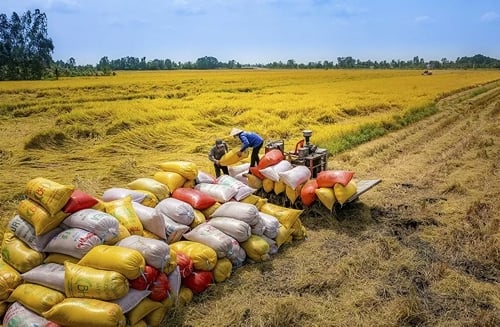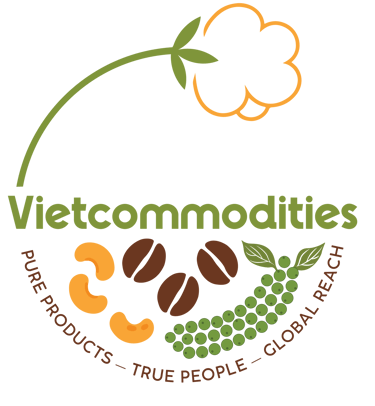Long-term strategy needed to maintain agricultural export position
In the context of global economic and political fluctuations and pressure from trade barriers, Vietnam's agricultural sector still maintains its pivotal role when the export turnover of agricultural, forestry and fishery products. However, to maintain growth momentum and sustainable development, the agricultural sector needs a more flexible and comprehensive strategy in the last 6 months of the year and the following years.
Thanh Hang
7/19/20254 min read


In the first 6 months of 2025, Vietnamese agricultural products continued to affirm their role as a pillar of the economy, despite facing many challenges such as US reciprocal tariffs, climate change and price fluctuations in the global market.
According to statistics, the total import and export value of agricultural, forestry and fishery products in the first 6 months of 2025 is estimated at about 57 billion USD. Most of the main agricultural products maintained growth momentum such as: Coffee, rubber, pepper, cashew nuts. However, some products tended to decrease, such as vegetables and fruits: Export turnover is estimated at 2.7 billion USD, down 17.1% compared to the same period in 2024; rice: Export turnover is estimated at 2.6 billion USD, down 9.8% in value compared to the same period in 2024...
Assessing the agricultural market in the first 6 months of 2025, Mr. Nguyen Quoc Lan - Deputy Director of the Center for Industry and Trade Information (Ministry of Industry and Trade) said that, in the face of fluctuations in the global political and economic situation, along with changes in policies of key importing countries and limitations in internal capacity, Vietnamese agricultural products are facing both advantages and challenges in the process of striving to achieve the growth target in 2025 and the following years.
On the positive side, demand for agricultural products such as rice, vegetables, coffee and seafood continues to increase strongly in major markets such as China, the United States, the EU and Japan, while expanding to new markets such as Africa, the Middle East and Latin America. Free trade agreements (FTAs) facilitate tariffs and expand market access opportunities.
“The government also promotes support policies through the development of raw material areas, administrative reform, digital transformation and green agriculture. Favorable geographical location, improved quality of agricultural products along with the application of VietGAP, GlobalGAP standards and traceability systems help increase competitiveness in the international market," Mr. Lan stated.
However, Vietnamese agricultural products also face many difficulties and challenges. Lack of capital, lack of technology and slow digital transformation are major barriers for many businesses and farmers. New tax policies and trade barriers from the United States threaten to sharply reduce export turnover. Strict standards from the EU, the United States and Japan related to food safety, environment and sustainable labor increase compliance costs.
The logistics system is still weak, lacking cold storage and specialized transportation. Agricultural products are still mainly exported in raw form, and value chain linkages are still loose. In addition, climate change, international competition and spontaneous production continue to be factors that greatly affect the sustainable development of the agricultural sector.
Flexible strategies needed to maintain growth momentum
According to the plan for the last 6 months of 2025 of the Ministry of Agriculture and Environment, the total export turnover of agricultural products is expected to reach about 31.6 billion USD, down about 4.8% compared to the same period in 2024, corresponding to a decrease of about 1.6 billion USD, in the scenario that the reciprocal tax from the US side remains the same as it is now.
In response to this forecast, Mr. Nguyen Quoc Lan said that the target is completely feasible. "If we consider comprehensively factors such as trade policy, weather conditions, market developments and the industry's internal capacity, the agricultural export target of 31-32 billion USD in the last 6 months of the year is within reach, as long as there are no major tax fluctuations from the US and the weather does not have extreme phenomena that seriously affect production," Mr. Lan analyzed.
According to Mr. Nguyen Quoc Lan, in the last months of 2025, many difficulties and challenges such as US tariffs, climate risks (drought, epidemics), fierce competition from countries with advantages and non-tariff barriers (technical standards, food safety, traceability, etc.) require Vietnam to respond flexibly.
Accordingly, to achieve the 2025 growth target and move towards sustainable development, Vietnam needs to synchronously deploy many strategic solutions, focusing on responding to trade policies, expanding markets, and improving the quality and added value of agricultural products.
First of all, Vietnam needs to strengthen dialogue and bilateral negotiations with the United States to reduce import tariffs and maintain market share for key products such as seafood and coffee. At the same time, it is necessary to soon build a national traceability system and support small and medium-sized enterprises to meet FTA standards. In addition, providing financial support packages and accelerating customs reform are also urgent solutions to minimize the impact of trade barriers.
Next, to reduce dependence on major markets, Vietnam needs to diversify its export markets, promote official exports to China and expand to potential markets such as India, Russia, the Middle East and Africa. In addition, it is necessary to step up trade promotion, take advantage of digital platforms, enhance training on rules of origin, and build national brands for strategic products such as ST25 rice, robusta coffee and shrimp.
Finally, it is necessary to encourage investment in deep processing to increase value and reduce dependence on raw exports. The application of smart agriculture (IoT, AI, big data), expansion of standard raw material areas, strengthening chain linkages and developing green, low-emission agriculture are key factors. At the same time, it is necessary to improve logistics infrastructure, invest in cold storage, specialized transportation and enhance human resource capacity through training and research cooperation, creating a solid foundation for long-term development of Vietnamese agricultural products
Source: Finance Magazine
© 2025. All rights reserved.
We are always ready to support your sourcing needs and discuss customized solutions.
Let’s connect and explore how Vietcommodities can become your trusted partner!
